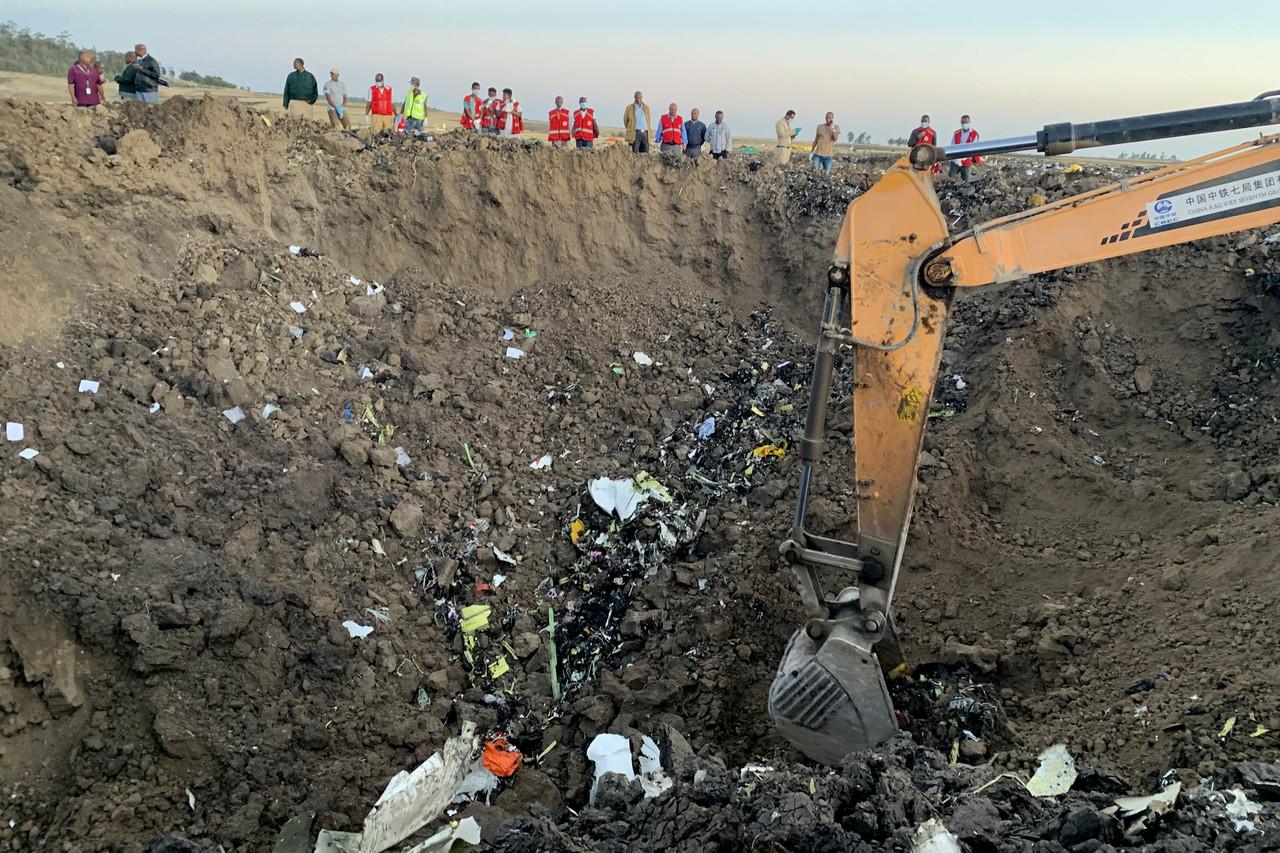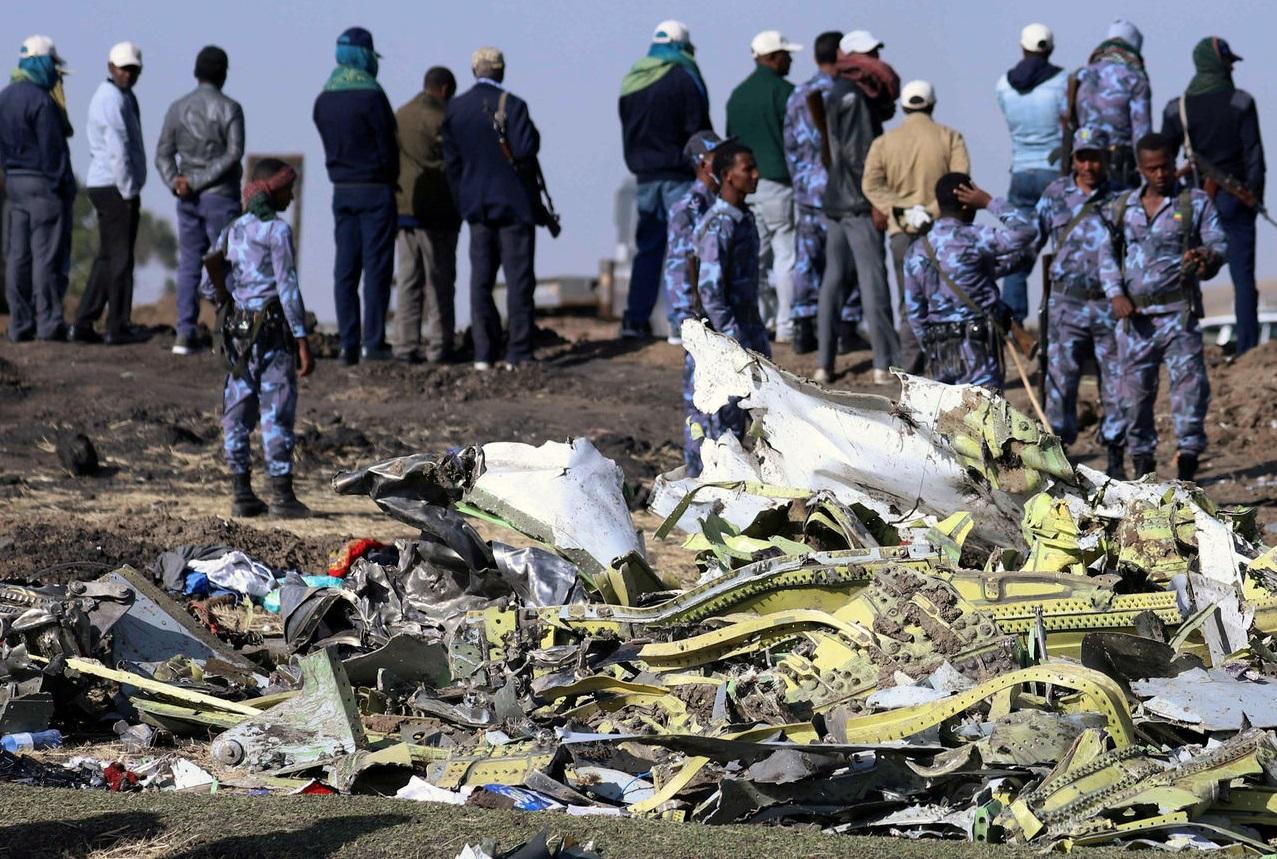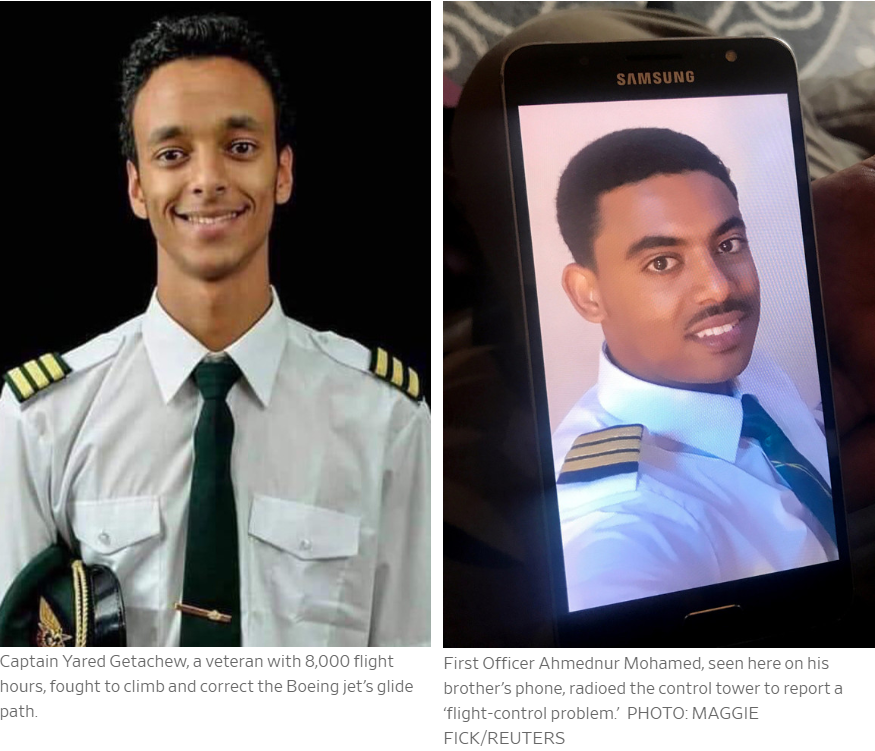As Ethiopian Airlines flight 302 took off in perfect, cloudless conditions on at 8:37 on March 10, it would take less than two minutes for all hell to break loose with the Boeing 737 Max 8 with 157 people on board.
Two minutes after it departed from Addis Ababa’s highland airport on its scheduled one hour and 40 minute shuttle to Nairobi, things began to go very wrong, according to the Wall Street Journal.
At 8:39, with the jet just 450 feet above the ground, its nose began to pitch down. First Officer Ahmednur Mohamed radioed the control tower to report a “flight-control problem.”
Captain Yared Getachew, a veteran with over 8,000 flight hours, fought to keep the plane’s nose up. One minute later at 8:40, “the oscillation became a wild bounce, then a dive,” according to the WSJ.
“Pitch up, pitch up!” said one pilot to the other before the radio went dead.
At 8:44 the 737 Max 8 crashed into a field 30 miles from the airport, instantly killing everyone on board.


This reconstruction of the final moments of Ethiopian Airlines Flight ET302, described in new detail by people close to the crash investigation, airline executives and pilots, paints a picture of a catastrophic failure that quickly overwhelmed the flight crew.
It appears to support a preliminary conclusion reached by Ethiopian officials and international investigators, who believe an automated flight-control feature activated before the plane nose-dived into the ground, according to people familiar with the matter. –Wall Street Journal
The black boxes have reinforced the emerging consensus that the anti-stall MCAS system is to blame, and that the misfiring system is at the heart of both the Ethiopian Airlines crash and the October Lion Air 787 Max 8 crash off the coast of Indonesia less than five months earlier in which the stall-prevention system activated due to an erroneous sensor reading which pushed the plane’s nose down, killing all 189 people on board.
The day before the Lion Air crash, an off-duty pilot flying in the jumpseat of the same plane was able to talk pilots through powering off the MCAS system as it began to exhibit the same malfunction.
Right after the Ethiopian Airlines jet lost radio contact and fell off the radar, it was becoming clear that the plane had crashed.
As two air force helicopters prepared to lift off to search for ET302, pilots on the airport runway were getting restless.
Lazarus Kuol was in line for departure, preparing to take off on his single-engine turboprop aircraft on a medevac flight to the southwestern city of Jinka. He was due to collect two Chinese patients and bring them back to Addis Ababa for treatment.
The waiting pilots, listening to the control tower’s shared frequency, heard the operators discuss an emergency and order all aircraft to remain grounded, while two incoming planes were told to delay landing. The tower had lost contact with ET302. Maybe it was a communication problem, Mr. Kuol thought, or maybe they made an emergency landing on the flat farmlands southeast of the capital. –Wall Street Journal

“When I went to the site, the plane was completely below ground,” said Ethiopian Airlines Chief Executive Tewolde Gebremariam. “At that time, we knew there were no survivors.”
via ZeroHedge News https://ift.tt/2UnhZoq Tyler Durden

